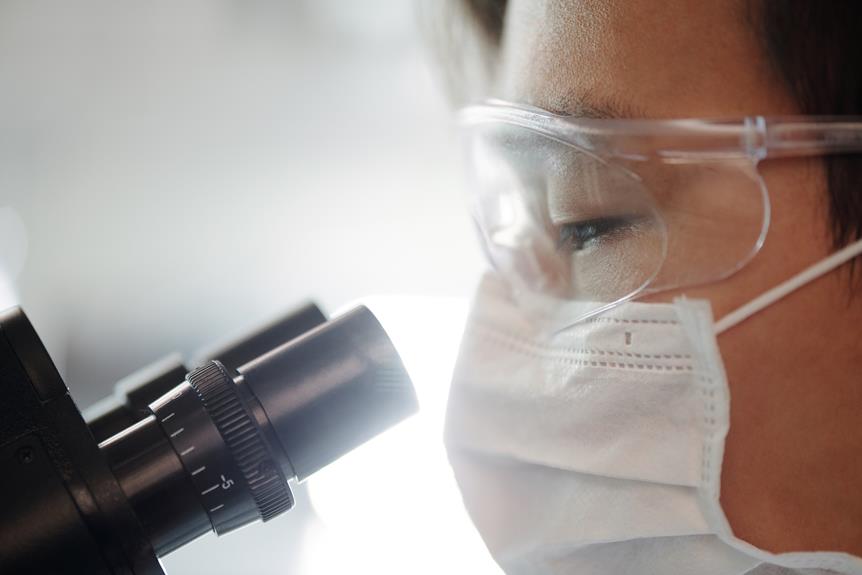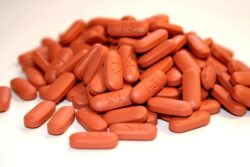Blood Thinners: Types, Side Effects and Drug Interactions
In the wake of a heart attack, 68-year-old John was prescribed blood thinners to reduce his risk of future incidents. This scenario is commonplace, as these vital medications play a critical role in preventing blood clots. Yet, understanding their types, potential side effects, and interactions is crucial for effective treatment. This article offers a comprehensive exploration of blood thinners, providing valuable insights for anyone prescribed these life-saving drugs.

Key Takeaways
- Blood thinners are prescribed to prevent blood clots in individuals at risk of strokes, heart attacks, and blood clots.
- There are two categories of blood thinners: anticoagulants and antiplatelet medications.
- Natural blood thinners, such as alcohol, garlic, ginger, celery seed, and anise seed, can help slow or prevent clotting, but should not be used as a substitute for prescription blood thinners.
- Blood thinners can have interactions and limitations with certain foods, herbs, oils, alcohol, medications, and herbal supplements, and may have side effects such as bruising, uncontrolled bleeding, weakness, and nausea.
Understanding the Role of Blood Thinners
Understanding the role of blood thinners involves comprehending their primary function, which is to prevent the formation of harmful clots within the blood vessels. These medications play a crucial role in stroke prevention. By inhibiting the clotting process, blood thinners reduce the risk of blockages in the brain, thereby minimizing the likelihood of a stroke. Furthermore, these drugs are indispensable in managing deep vein thrombosis (DVT), a condition where clots form in the deep veins of the body, often in the leg. Blood thinners help prevent the growth of these clots, thus reducing the risk of serious complications such as pulmonary embolism. Recognizing the benefits of blood thinners for stroke prevention and their role in managing DVT is essential for understanding their significance in medical treatment.
The Mechanism of Blood Thinners
We will now delve into the underlying mechanisms by which blood thinners work to prevent clotting within the circulatory system. The mechanism of blood thinners involves two primary strategies: targeting clotting factors and platelet inhibition. Blood thinners, such as anticoagulants, disrupt the clotting process by targeting and inhibiting specific clotting factors in the blood. This action reduces the blood's ability to coagulate and form clots. The second mechanism involves the inhibition of platelets, a key component in clot formation. Certain blood thinners, known as antiplatelet drugs, prevent these platelets from sticking together, thereby averting clot formation. Thus, through a dual approach of clotting factor disruption and platelet inhibition, blood thinners serve as effective agents in clot prevention and reduction of thromboembolic events.
Classifying Blood Thinners: Anticoagulants and Antiplatelets
In the realm of pharmacology, blood thinners are typically classified under two main categories: anticoagulants and antiplatelets. Understanding the blood clotting process is vital in distinguishing between these two. Anticoagulants, such as warfarin or heparin, disrupt the process by which blood clots are formed, specifically interference with the proteins that bind together to form a clot. On the other hand, antiplatelets, like aspirin, prevent the aggregation of platelets, the blood cells responsible for initiating the clotting process. Therefore, the comparison of anticoagulants and antiplatelets lies in their mechanism of action. Anticoagulants inhibit the clotting factors, while antiplatelets prevent the clumping of platelets, both serving the ultimate goal of preventing harmful blood clots.
Commonly Prescribed Blood Thinners
Among the plethora of available anticoagulant and antiplatelet medications, certain blood thinners are more commonly prescribed due to their proven efficacy and safety profiles. These include drugs such as Warfarin, Heparin, and newer agents like Apixaban and Rivaroxaban. The benefits of blood thinners encompass the prevention of blood clots, strokes, and heart attacks. However, potential risks may involve bleeding complications, and hence, regular monitoring is pivotal. The long-term effects of blood thinners on the body can vary, with some patients experiencing minor side effects and others more significant complications. Alternatives to these medications exist, including lifestyle changes or the use of novel therapeutic devices. An open discussion with healthcare professionals will allow patients to better understand the balance between benefits and risks.
Potential Side Effects of Blood Thinners
Despite the significant benefits associated with the use of blood thinners, the potential for encountering a range of side effects, both minor and severe, is a reality that patients must be prepared for. The most common side effect is bleeding due to the drug's anticoagulant properties. Managing bleeding risks is crucial, as excessive bleeding can lead to serious health complications. Other side effects may include bruising, nausea, or dizziness. In more severe cases, blood thinners can result in internal bleeding or hemorrhagic strokes. In some situations, alternative treatments may be considered to mitigate these risks. These can include lifestyle changes, natural supplements, or the use of different medications. It's essential that patients discuss potential side effects and management strategies with their healthcare provider.
The Concept of Natural Blood Thinners
Over the course of recent years, the concept of natural blood thinners has gained considerable attention in the medical field. These are substances that can help prevent blood clots in a similar way to pharmaceutical blood thinners. They include foods and herbs such as garlic, ginger and turmeric, known for their anticoagulant properties. However, the natural blood thinners effectiveness is a topic of ongoing research. While they have been found to contribute to the thinning of blood, they should not replace prescribed medications. Moreover, the potential risks of natural blood thinners should not be overlooked. Consuming them excessively or in combination with pharmaceutical blood thinners may lead to complications, including an increased risk of bleeding. Therefore, their use should always be discussed with a healthcare professional.
Dietary Factors and Blood Thinners
Several dietary factors can significantly influence the effectiveness of blood thinners, and understanding these interactions is crucial for patients on these medications. Certain foods, especially those rich in vitamin K such as leafy greens, can counteract the function of anticoagulants. Concurrently, natural alternatives to blood thinners like garlic and ginger have blood-thinning properties, but should not replace prescribed medication without a physician's approval. Alcohol, while a natural blood thinner, can increase the risk of bleeding when consumed in excess. It's crucial to maintain a consistent, balanced diet and communicate any dietary changes to your healthcare provider. Monitoring these dietary factors and blood thinners' interactions can enhance treatment efficacy and minimize potentially harmful side effects.
Blood Thinners in Different Health Conditions
In managing various health conditions, blood thinners play a pivotal role, and understanding their function in different contexts can assist both healthcare professionals and patients in optimizing treatment strategies. For instance, in pregnancy, the use of blood thinners is approached with caution due to the increased risk of bleeding. The benefits need to outweigh potential risks, and the choice of agent must be carefully considered. On the other hand, athletes may be prescribed blood thinners for conditions like deep vein thrombosis or pulmonary embolism. The medication helps prevent clot formation while the athlete is immobilized due to an injury. However, blood thinners for athletes require careful monitoring to avoid excessive bleeding during physical activities. Thus, the application of blood thinners varies significantly based on the health condition.
Risks and Warnings Associated With Blood Thinners
How, then, can we navigate the potential risks and heed the warnings associated with the use of blood thinners? The primary risk associated with these medications is the increased bleeding risk. This can manifest as easy bruising, prolonged bleeding from minor cuts, or, in severe cases, life-threatening internal bleeding. Careful monitoring and regular tests are, therefore, essential for patients on blood thinners. Another significant concern is drug interactions. Blood thinners can interact with various other medications, herbs, and foods, altering their effectiveness and potentially leading to harmful consequences. For instance, certain antibiotics and antifungal medications can increase the effect of blood thinners, raising the bleeding risk. Therefore, transparency with healthcare providers about any co-administered substances is crucial to prevent adverse effects.
Interactions of Blood Thinners With Other Medications
A significant number of prescribed and over-the-counter medications can interact with blood thinners, potentially altering their effectiveness or leading to adverse effects. These potential drug interactions pose a significant risk to patients, especially those managing medication combinations for multiple health conditions. Examples of medications that can interact with blood thinners include anti-inflammatory drugs, some antibiotics, antifungal medicines, and certain antidepressants. Even seemingly benign substances like St. John's Wort or grapefruit juice can pose a risk. These interactions can increase the risk of severe bleeding or counteract the blood thinners' efficacy, raising the risk of clot formation. Therefore, it is essential for patients and healthcare providers to communicate effectively about any new medications, including over-the-counter drugs and supplements, to avoid potential adverse interactions.
Managing Side Effects of Blood Thinners
Regularly monitoring for side effects is imperative when taking blood thinners, and understanding how to manage these potential symptoms can significantly improve a patient's quality of life. Managing side effects of blood thinners involves constant communication with healthcare providers, immediate reporting of adverse symptoms, and adhering to prescribed medication schedules. Ensuring a balanced diet, limiting alcohol, and avoiding potential drug interactions also contribute to symptom management. For some, alternative treatments for blood thinning may be explored. These could include natural blood thinners such as garlic or ginger, under a doctor's supervision. However, these should not replace prescribed medications without professional guidance. Being proactive in managing side effects can help patients maintain their health while reducing the risks associated with blood thinners.
Lifestyle Considerations While Taking Blood Thinners
Patients must consider several lifestyle adjustments when taking blood thinners to ensure safe and effective treatment. One of the key areas affected is diet. Dietary restrictions are significant due to the interaction between certain foods and blood thinners. Foods rich in vitamin K like leafy greens can counteract the effectiveness of some blood thinners, thus moderation is advised.
Exercise recommendations are another crucial consideration. Regular, moderate exercise is generally encouraged but patients should avoid activities with a high risk of injury or bleeding. It's also crucial to maintain a consistent level of physical activity.
Alcohol should be consumed in moderation, if at all, as it can amplify the effects of blood thinners, increasing the risk of bleeding. Consulting with healthcare providers about these lifestyle modifications is essential.
Strategies to Minimize Risks of Blood Thinners
Implementing carefully planned strategies can significantly minimize the potential risks associated with the use of blood thinners. These strategies focus on minimizing bleeding risks and exploring alternative treatment options. Regular monitoring of blood tests can help adjust the dosage of blood thinners, thus preventing excessive bleeding. Patients should also be educated about the symptoms of bleeding, encouraging quick response to any abnormalities. In terms of alternative treatment options, lifestyle changes like a balanced diet, regular exercise, and cessation of smoking can complement the effects of blood thinners, reducing the overall dependency on these drugs. Lastly, before starting any new medication, one should consult with healthcare professionals to avoid drug interactions that could increase bleeding risks.
Patient Experiences With Blood Thinners
In order to gain a comprehensive understanding, it is essential to consider individuals' personal experiences with blood thinners and how these medications impact their daily lives. Patient testimonials frequently highlight the importance of strict adherence to dosage schedules and the necessity of regular medical check-ups to monitor the effects. Many patients express concern about side effects, such as excessive bleeding and bruising. Some even report lifestyle changes due to dietary restrictions and interactions with other drugs. Despite these challenges, the majority acknowledge the crucial role of these medications in preventing life-threatening clots. Interestingly, a number of testimonials also mention exploring alternative treatments, including natural supplements and dietary modifications, often under medical supervision. These personal narratives underscore the complexity of managing blood-thinning medication regimens.
Future Developments in Blood Thinning Medication
Amid ongoing research and clinical trials, exciting advancements are on the horizon for blood thinning medication, and these could potentially enhance efficacy, reduce side effects, and ultimately improve patient outcomes. However, development challenges persist, including the need for more precise dosing and a reduction in the risk of uncontrollable bleeding. Yet, researchers are hopeful that the utilization of advanced biotechnologies may overcome such hurdles. Furthermore, alternative therapies are being explored, such as natural anticoagulants and gene therapy, which hold promise for safer, more personalized treatment strategies. These innovations, despite the challenges, could revolutionize the management of cardiovascular diseases and conditions that require blood thinning medication, thereby significantly improving patients' lives.
Frequently Asked Questions
What Are Some Potential Signs That a Blood Thinner Dosage Might Be Too High or Too Low?”
When assessing blood thinner dosage, several signs may indicate an imbalance. Dosage adjustment factors such as uncontrolled bleeding, bruising, or rash development may suggest too high a dosage. Conversely, clot formation can hint at a low dosage. Furthermore, dietary influences can affect medication effectiveness. For instance, vitamin K-rich foods may lessen the impact of certain blood thinners. Regular monitoring and communication with healthcare professionals are crucial to maintain an optimal dosage.
How Long Does It Typically Take for a Blood Thinner to Start Working After It Is First Taken?”
The effectiveness of blood thinners can typically be seen within a few hours to a couple of days after the first dose, depending on the specific drug. Factors such as dietary impact and genetic factors can influence this timeline. It's vital to maintain consistent communication with healthcare providers to ensure optimal results and monitor for any potential side effects. Regular blood tests may be required to assess the efficacy of the medication and adjust dosages as necessary.
Can Blood Thinners Be Safely Used During Pregnancy or Breastfeeding?”
The use of blood thinners during pregnancy or breastfeeding poses potential risks and should be carefully managed. Pregnancy complications may arise due to the increased risk of bleeding. Certain blood thinners can cross into breast milk, posing breastfeeding challenges. It's crucial to consult with a healthcare professional to evaluate the benefits and risks. They can prescribe the safest and most effective blood thinner, ensuring the health of both mother and child.
What Should One Do if They Accidentally Miss a Dose of Their Blood Thinner Medication?”
If a dose of blood thinner medication is accidentally missed, it's crucial not to double up on the next dose. Instead, take the missed dose as soon as it's remembered unless it's near the time for the next dose. Utilizing dose tracking methods and medication reminders could prevent missed doses. However, if doses are frequently forgotten, consult with a healthcare provider for advice and potential adjustments to the medication regimen.
Are There Any Exercises or Physical Activities That Should Be Avoided While Taking Blood Thinners?”
While on blood thinners, certain physical activities that may cause injury and induce bruising should be avoided. These include high-impact sports, and activities involving sharp objects or falls. Extreme caution should be exercised during exercise to prevent thinner-induced bruising. Additionally, specific dietary considerations are crucial as some foods can interact with the medication. Always consult with your healthcare provider before making significant changes to your physical activity or dietary habits.
Conclusion
In conclusion, blood thinners play a pivotal role in the prevention of life-threatening conditions such as strokes and heart attacks. Despite potential side effects and interactions, their benefits are considerable. A noteworthy statistic is that approximately 2-3% of the global population takes anticoagulants regularly, highlighting their fundamental role in healthcare. As research progresses, enhancing the efficacy and safety of these medications remains a priority, potentially improving the lives of millions of patients worldwide.

This post has been generated by AI and was not reviewed by editors. This is Not legal advice. Please consult with an attorney.




